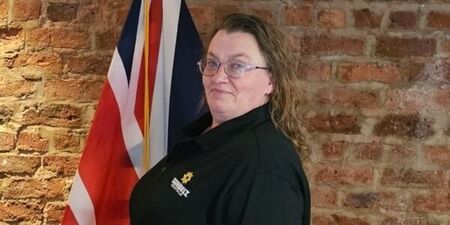NEWS
Read the latest updates and view archived articles from Walking With The Wounded's 'Walking Home Home For Christmas' December campaign.
Toby's Story
By Walking With The Wounded on
Serving in the Royal Engineers for four years, Toby’s deployment to Serbia was a life-changing time resulting in lasting mental trauma. Only 21 when he left the military, Toby’s transition back into civilian life was not straightforward and he relied heavily on drink.
His life started to implode until he was finally diagnosed with PTSD and help came through veteran services. Toby was initially in the RAF cadets when he was 17, but when looking for a career he decided to enlist in the Army. He qualified as an HGV driver with the Royal Engineers and he enjoyed military life, making strong and lasting friendships with the guys he served with.
Toby was eventually diagnosed with PTSD and received intensive treatment at Combat Stress, the Veterans’ Mental Health charity. As part of this, he took part in Art Therapy and found it to be a very powerful part of his treatment. ‘You would draw or write something very personal, very deep and dark and then be asked to share it with the group. It was tough.’
Toby continued his treatment through Op COURAGE for a year before he was referred to Joanne, his Employment Advisor at WWTW and they discussed possible plans for the future. He had initially considered going back to work, but Joanne thought that it might be better for him to try volunteer work to help build his confidence, re-apply skills and re-socialise him. Joanne talked to Toby every week and together they set small achievable goals so that he never felt overwhelmed.
Over the last year, Toby has really spread his wings. He is using his creative skills again and runs some local community art sessions and has himself produced three pieces of art that were displayed at the Veterans’ Art Exhibition in St Pancras Hospital, London.
Toby also volunteers at a food bank hub and raises funds for the hub by making and selling key rings, dog leads and collars made from para chord. He arranged a local walk and talk group (with support from the local mental health service) with a view to organising camping trips in the future.
You may also like

Leanne's Story
By Walking With The Wounded on
Leanne’s military service with the Royal Corp of Signals was cut short when she was medically discharged after being injured in training. Initially she transitioned back into civilian life well, and used her military skills in the security industry.
When her brother was tragically killed in a car accident some years later, however, Leanne struggled to cope. She tried to keep a ‘stiff upper lip’ but gradually developed severe depression and anxiety, made worse by the long hours and shiftwork her demanding job required. She knew she needed a change.
Applying for a variety of roles, Leanne never seemed to have the right experience and, over the next two years, her applications were repeatedly turned down. Finally she was offered a job, but...

Ally's Story
By Walking With The Wounded on
Ally was born and raised in North London and after school he went on to college to study for a degree. He got married and had 2 children and worked hard to support his family. As a young man with ambitions, he set up his own close protection company. It was whilst at work that he suffered a significant injury that left him feeling bereft, as if he had lost a part of himself. Ally wanted and needed a new role in life, one that offered support and reliability. He chose the Army.
In 2009, Ally joined the Honourable Artillery Company (HAC) and served in the Reserves whilst continuing to maintain his business commitments. He later transferred to 7th Battalion The Rifles and in 2013 he was deployed on active duty to Afghanistan as part of Op...

Carl's Story
By Walking With The Wounded on
Carl served in the Duke of Lancaster’s Regiment for five years. Carl was in Poland, completing his pre-deployment training exercises (prior to a tour of Afghanistan) when he fractured his spine. Unfortunately, his injury was not investigated immediately and this led to Carl developing Scheuermann’s Disease, a deformity of the lower vertebrae.
After 9 months of extreme discomfort, he finally received an x-ray, and the spinal fracture was revealed. He was sent to Headley Court for treatment but by that time, it was too late to repair. Carl now permanently suffers from intermittent severe and debilitating lower back and leg pain.
Carl did not want to leave the military; he would still be serving now if he was physically able to do so. The...